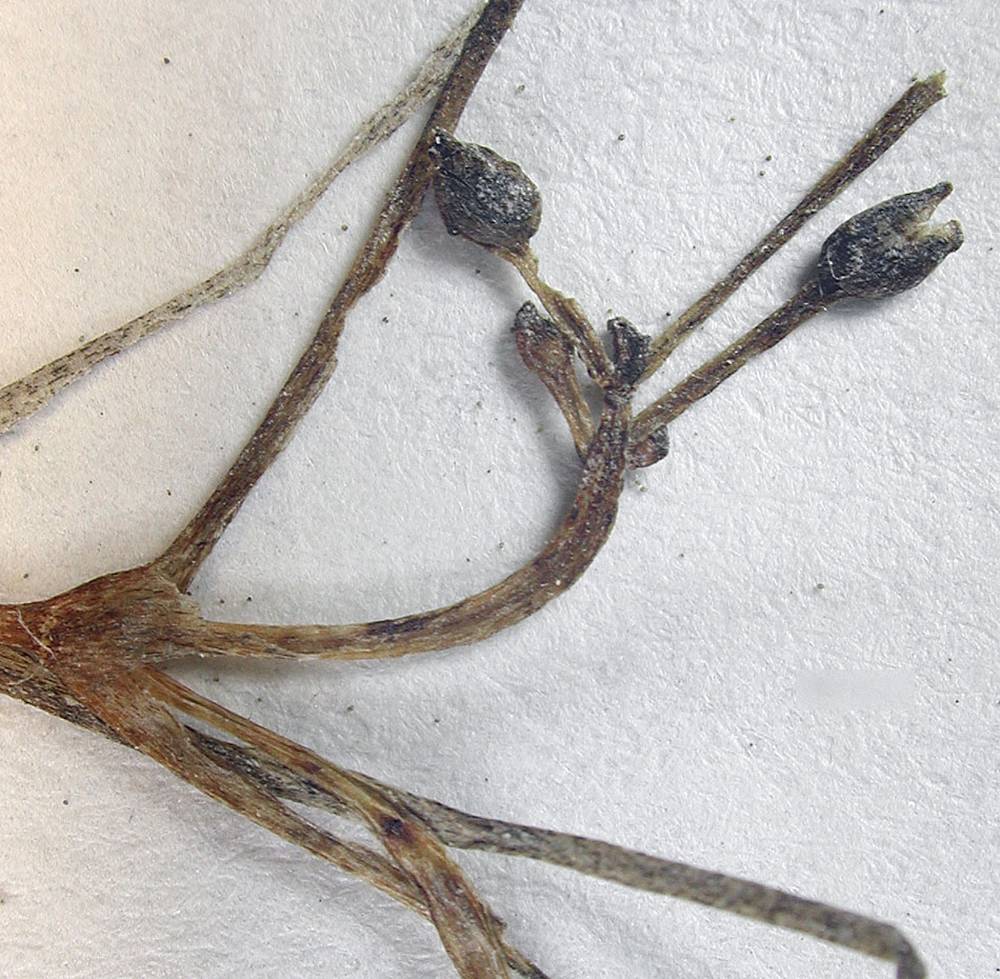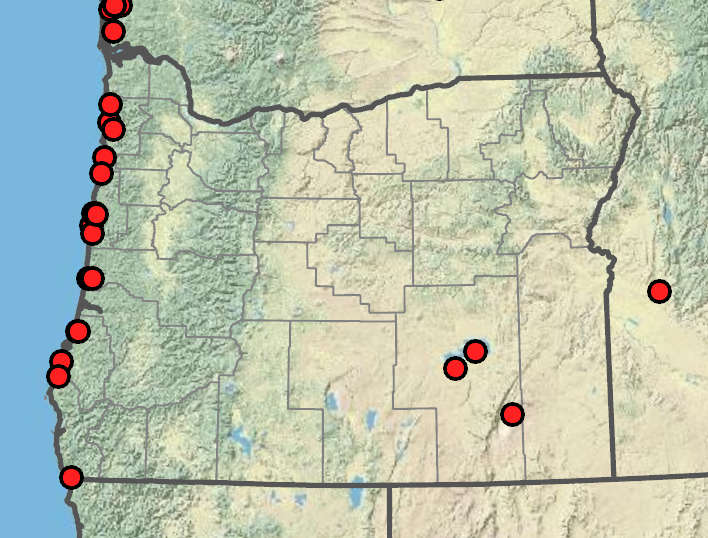Ruppia maritima
Ruppiaceae
beaked ditch-grass, widgeon-grass
ditch-grass family
widely branched, 50 cm × 0.1–0.7 mm long; terete; lower stems rhizomatous; upper stems erect and leafy.
submersed, 3–10.5 cm × 1 mm;
apex more or less obtuse;
stipules adnate to the petiole, 5–15 mm long; the free ends 1–5 mm long.
terminal; head-like spikes;
flowers less than 20;
peduncles with 0–4 coils, 0.5–16.5 × 0.5 mm at flowering time, elongating and 5–30 mm long in fruit, becoming stalk-like after flowering and lifting the flowers to the surface; later often becoming coiled and submerging;
bract 1.
perianth 0;
stamens 2;
anthers more or less sessile;
pistils 2–8; simple;
stigmas sessile.
inconspicuously to short-beaked, slightly recurved; turgid, obliquely ovoid to oblong, 1.8–3 × 0.7–1.5 mm; stalk-like at base.
=20.
Ruppia maritima
Ruppiaceae
Shallow waters of saline or brackish streams, ditches, pools, and lakes, along the ocean shore or in alkaline pools in the interior. 0–1300 m. BR, Est. CA, NV,WA; nearly worldwide. Native.
See family description.
4 species; 1 species treated in Flora.
Other sources may refer to freshwater, inland plants of this genus (within Oregon and North America) as R. cirrhosa. A molecular study by Ito et al. (2010), however, concludes that R. cirrhosa is not a distinct species, but rather one of six lineages within the R. maritima species complex.
Lareina Shipler
- Local floras:
BC,
CA,
OR,
WA
- Local Web sites:
CalFlora,
CalPhotos,
Flora NW,
PNW Herbaria
WildflowerSearch
iNaturalist (observations)
USDA Plants Database
- LBJ Wildflower Center
- SEINet
- Plants of the World Online
- Encyclopedia of Life
- Wikipedia
- Google Image Search
- Local floras:
CA,
OR
- Local Web sites:
CalFlora,
CalPhotos,
Flora NW,
PNW Herbaria
WildflowerSearch
iNaturalist (observations)
- LBJ Wildflower Center
- SEINet
- Plants of the World Online
- Encyclopedia of Life
- Wikipedia
- Google Image Search



